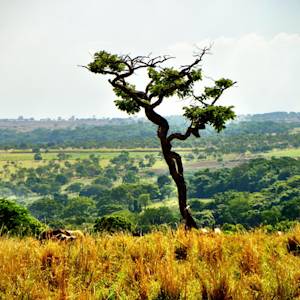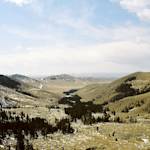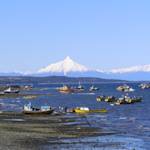Prince Edward Islands MPA, jewel of the southern ocean
2013 CE • South Africa, Antarctic
The "Prince Edward Islands (PEI) Marine Protected Area (MPA) is one of the largest of its kind in the world and a true conservation jewel in the Southern Ocean. The Prince Edward Island group, made up of Marion Island and Prince Edward Island, is situated well away from continental land masses and the usual sea routes. As a result the PEI MPA is considered the most pristine in the Southern Ocean . . . The marine biodiversity of the islands is of global importance. Given the scarcity of land masses in the Southern Ocean, these sub-Antarctic islands contain vast populations of seals and seabirds . . . Like other small oceanic islands, the islands rely on the surrounding ocean for nutrient input. Top predators (birds and seals), which use the islands to breed and moult, bring nutrients to the islands’ shelf area and the pelagic environment. Island runoff, driven by rainfall, then augments the nutrients in the shelf waters. The close relationship between the islands’ marine and terrestrial environments provides the islands’ life support system. Marine resources in the area have been threatened by illegal and unsustainable fishing practices in the past, resulting in significant economic and ecological losses to South Africa. The marine resources of the Prince Edward Islands suffered a negative impact during the 1980s, mainly due rampant illegal, unregulated and unreported (IUU) fishing activity for Patagonian toothfish (Dissostichus eleginoides). The establishment of a longline fishery for Patagonian toothfish on the islands’ shelf waters places seabirds at risk. Certain species of seabird to are prone to diving after baited hooks, becoming snagged, and drowing during line setting. This source of mortality affects populations of seabirds dramatically — albatrosses and large procellaria petrels being particularly vulnerable . . . The Southern Ocean region and the Antarctic are in many ways a microcosm of the environmental change found elsewhere on the planet . . . The islands’ climate has changed significantly over the last few decades, having become warmer and drier. Climate changes on the island may have a dramatic effect on the breeding success of a number of bird species on the islands. One of the greatest threats to biodiversity is that of biological invasion. Wildlife on the islands is particularly vulnerable to introduced species that threaten endemic fauna and flora. Alien species introductions are a real threat, and many alien species appear to benefit from warmer climatic conditions."
"Prince Edward Islands Marine Protected Area: A global treasure setting new conservation benchmarks," World Wildlife Fund.
Image: NASA Earth Observatory image created by Jesse Allen, using EO-1 ALI data provided courtesy of the NASA EO-1 team and the United States Geological Survey. Caption by Michon Scott., Public domain, via Wikimedia Commons


Learn about Maya Lin’s fifth and final memorial: a multi-platform science based artwork that presents an ecological history of our world - past, present, and future.

Discover ecological histories and stories of former abundance, loss, and recovery on the map of memory.

Learn how we can reduce our emissions and protect and restore species and habitats – around the world.

See how art can help us rethink the problems we face, and give us hope that each one of us can make a difference.

Help make a global memorial something personal and close to home. Share your stories of the natural world.


